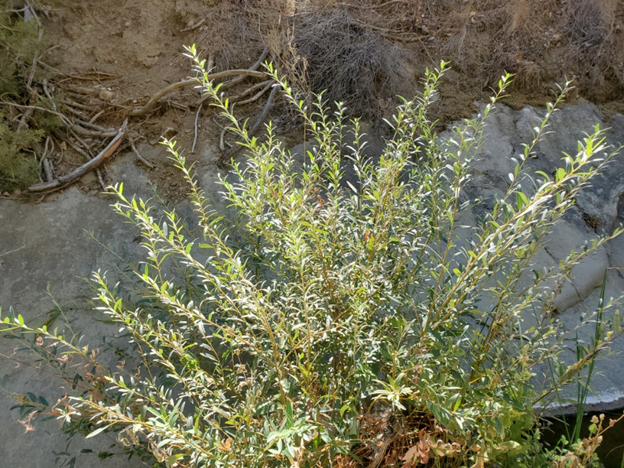Monumental Questions - Has it been NINE years already?

On July 10, 2024, the Berryessa Snow Mountain National Monument will commemorate its ninth anniversary! Time flies, especially when you’ve been busy working on getting that very special monument expanded (thanks President Biden!) by a few (13,696 to be exact) acres.
It seems like an anniversary gift is in order but, what does one get a national monument that already has everything (honestly, it pretty much has EVERYTHING you could want in a national monument: hiking, camping, mountain biking, fishing, hunting, kayaking, bird and wildlife watching, wildflower viewing…!)? According to Google and several wedding planning websites, the traditional nine year anniversary gift is pottery or willow. I can’t quite pinpoint where pottery might fit in but I can assure you that the monument is very well-dressed in willow.
Covering 344,476 acres in seven counties, Berryessa Snow Mountain National Monument (BSMNM) supports many different habitat types including chaparral, grasslands, oak woodland, forests and wetlands which includes several riparian areas. It is in these moist habitats where willows (Salix sp.) can be found. One species of willow, Brewer’s willow (Salix breweri) is endemic to California and occurs on serpentine soils where only highly specialized plants can survive - just one of the things that makes Berryessa Snow Mountain National Monument so special!
There are about 350 species of willows worldwide, some even occur in the alpine and arctic regions. Some species grow into sturdy, tall trees while others remain a smaller bushy, woody plant. Thirteen of those species are found within the BSMNM boundary and ten of those documented there are native to California. Some of the native species are fairly common like narrow leaf willow, sandbar willow, Arroyo willow and Goodings willow but others like the serpentine willow is not nearly as common. Most of the native species grow as either a shrub or a tree and they all occur where the soil is perpetually moist. They can do well in the shade and many of the species occur as an understory plant among other riparian species. Most willow species are deciduous and are one of the earliest woody plants to leaf out in the spring, and one of the latest to shed their leaves in the fall. They typically have elongated leaves, usually with serrated edges and depending on the species can occur in a variety of shades of green ranging from grayish-blue green to brighter yellow-green. Most willow species are not very long-lived but can sprout easily from their trunk or a branch ensuring that they proliferate. Sometimes willows are described as being “weedy” meaning they establish quickly and easily in the right conditions. Willows do especially well when vegetation disturbances such as clear cutting or fire open up space for them. Propagation is fairly easy with willows as they readily root from a cutting or a broken branch. A stem will even root if planted upside down! Historically, Native Americans intentionally set fires to clear vegetation to create space for new stands of willows to become established.
Willows are a very important habitat component for wildlife. Rabbits and ungulates such as deer and elk love to browse willow leaves, twigs and bark. Beavers seem to prefer willow branches for dam building and some bird species graze on the willow buds. Willows occur within riparian forests which provide critical habitat for many resident and migratory bird species. And, because willow species leaf out and flower early in the spring, they are an important source of nectar and pollen for bees. Other insects such as some butterfly larvae, wasps and wood ants also rely on different willow species for food.
Willows have abundant historic and current applications. Historically, Native Americans used fiber from the willow and twisted it into rope or string. The fiber could also be made into paper. The young shoots were used for weaving baskets and mats, and branches were used to make fishing weirs and traps. The wood is tough and pliable and the roots are considerable in size, resilience and tenacity to sprout. The branches were used to make meat drying racks and poles for their lodges. The sap is thin and watery but teeming with salicylic acid. Native Americans chewed willow bark or steeped it into a tea to treat sore throats, headaches and fevers. It wasn’t until the late 1850’s that aspirin was invented as a result of experimenting with the salicylic acid found in willows. Today, willow is still very valuable and used to make a variety of modern goods ranging from the delicate craftsmanship of wicker products, wooden furniture and acoustic bass creation to the mass manufacturing of cricket bats, tool handles and wood veneer.
So next time you’re hiking in our favorite monument and you see some willow trees, be sure to send some good thoughts for the previous nine years and appreciate that it’s there forever!
Fun Fact - There are two other National Monuments that share their “willow” anniversaries with our Berryessa Snow Mountain National Monument: Basin and Range National Monument in Nevada and Waco Mammoth National Monument in Texas!
-Kristie Ehrhardt (kehrhardt@tuleyome.org)
Tuleyome Land Conservation Program Manager
RECENT ARTICLES






